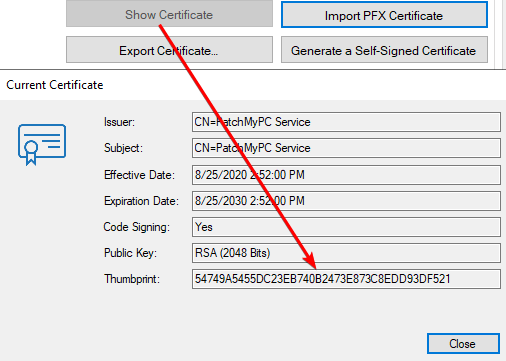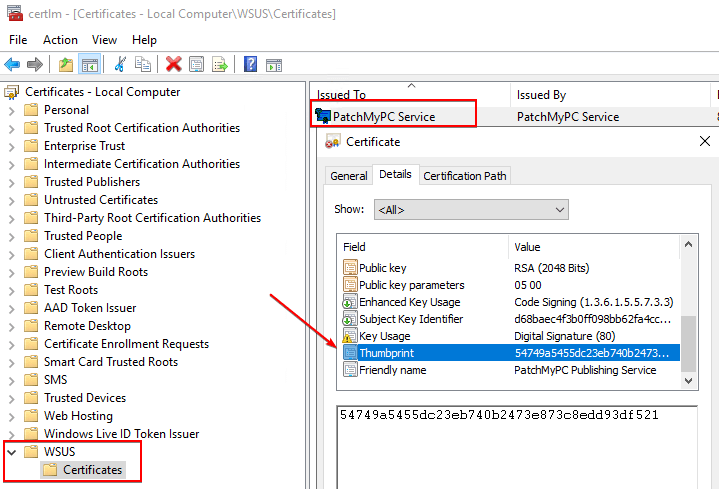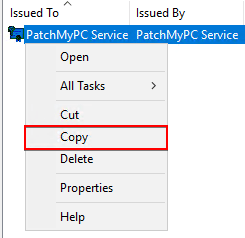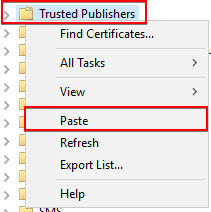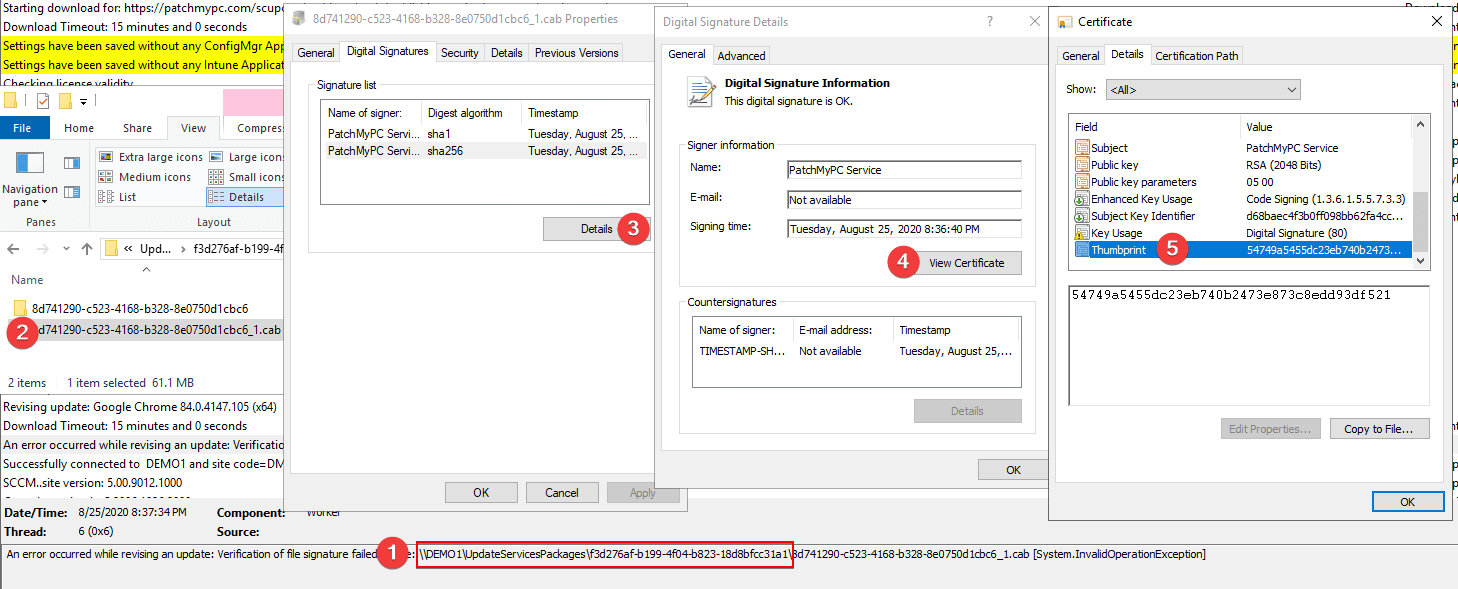Verification of file signature failed for file during update publishing
This article covers a common error “Verification of file signature failed for file:” that can occur when publishing a new update or revising a third-party software update in WSUS.
Topics covered in this article:
Determine if You are Affected
If you are affected by this error, you will see errors similar to the errors below in the PatchMyPC.log, SMS_ISVUPDATES_SYNCAGENT.log, or SoftwareDistribution.log. The actual log file you see the error in may vary depending on the Publishing method you are using.
An error occurred while publishing an update to WSUS: Verification of file signature failed for file: \\Server\UpdateServicesPackages\Update-ID.cab
PublishPackage(): Operation Failed with Error: Verification of file signature failed for file: \\Server\UpdateServicesPackages\Update-ID.cab
SyncUpdate: Exception Message: Verification of file signature failed for file: \\Server\UpdateServicesPackages\Update-ID.cab
Is the File Signature Failed Error Happening when Publishing New Updates?
There are two common scenarios where this error could occur. The first is when publishing a new update to WSUS, and the second is when revising an already published update.
If using the Patch My PC Publisher, you should see the following in the PatchMyPC.log before the signature validation error:
If using the in-console third-party catalog feature in SCCM, you should see the following line in the SMS_ISVUPDATES_SYNCAGENT.log to confirm a new update fails to publish:
If the error occurs when publishing a new update to WSUS, the WSUS Signing Certificate is not properly installed in the Trusted Root or Trusted Publishers certificate store on the WSUS Server.
Next, you need to determine the thumbprint of the WSUS Signing Certificate. If using the Publisher, you can click the Show Certificate in the General tab and take note of thumbprint.
If you are using the SCCM in-console publishing or any other method, you can open certlm.msc and navigate to the WSUS certificate store. If you double click the certificate, you can review the thumbprint in the Details tab.
Once the WSUS Signing Certificate is identified, you need to ensure it’s added to the Trusted Root and Trusted Publisher certificate store on the WSUS server.
Open certlm.msc and review the Certification Path tab of the WSUS certificate.
You may notice an error in this tab about the certificate not being trusted. Next, you need to ensure the certificate exists on both the Trusted Root and Trusted Publishers certificate store.
In the WSUS certificate store, right-click the certificate and click Copy.
In the Trusted Publishers store, right-click and click Paste:
Validate the certificate was copied to the Trusted Publishers store. If you receive a message, the certificate already exists you can click Yes to overwrite the existing certificate.
Repeat the same process to Paste the WSUS Signing Certificate into the Trusted Root certificate store.
The WSUS certificate should now be trusted on the WSUS server, and you can attempt to publish the update again.
Note: Although manually copying the WSUS signing certificate to the Trusted Root and Trusted Publishers is a quick fix for the WSUS server, ideally, the WSUS signing certificate should automatically be deployed to all machines, including the WSUS server.
Is the File Signature Failed Error Happening when Revising Existing Updates?
The error can also occur when an update already published to WSUS is attempting to be revised. In the PatchMyPC.log, you will see the following line before the error if it’s being revised:
If the CAB file for the update being revised does exist:
If the .CAB file for the update referred to in the error exists. You will want to review the certificate used to sign it in the Properties of the file.
You will need to repeat the steps in the previous section to ensure the certificate for the previously published update exist in the Trusted Root and Trusted Publishers certificate store on the WSUS server.
If the CAB file for the update being revised does not exist:
If the cab file doesn’t exist in the UpdateServicesPackages folder, this means the file was likely removed during a WSUS cleanup task, or the WSUS content folder may have been moved without copying old updates.
Whenever an update is revised (a command line change is one example when this may happen), the WSUS API needs access to the originally published CAB file in the UpdateServicesPackages folder. If this file doesn’t exist, you will always receive the error: “Verification of file signature failed for file:“.
If you are unable to restore the CAB file in the UpdateServicesPackages from a backup, the only other workaround is to republish the updates for the product as a new update and supersede the current update that is unable to be revised during the republishing confirmation prompt.
Video Guide
We plan to add a video guide for this issue soon.


